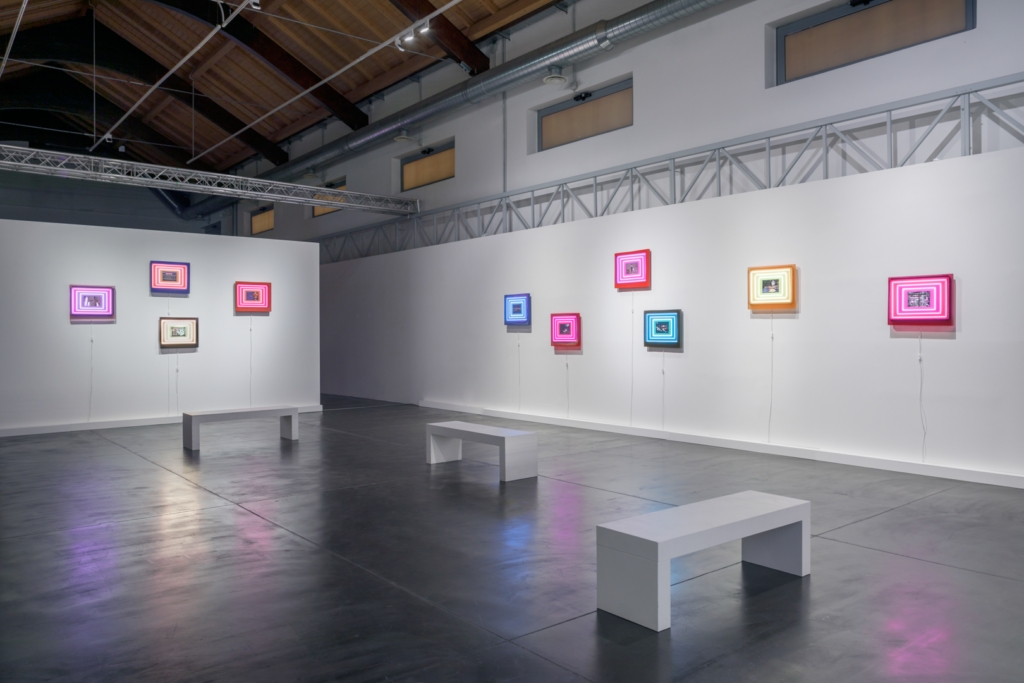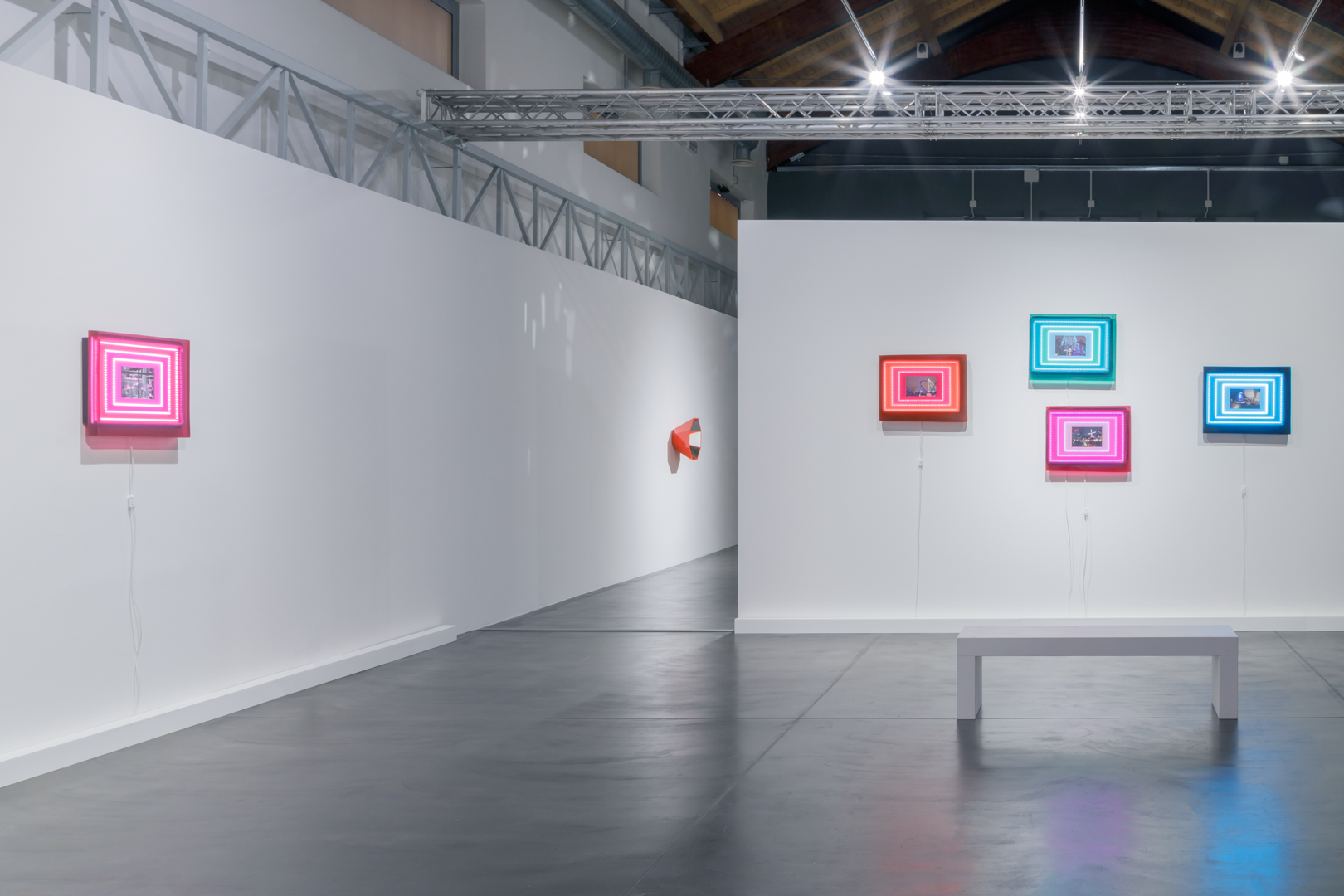WEM EDITORIAL #8 CHIARA DYNYS
Merry Liseberg Parade (2021)
The fascination for contrasts and perceptual estrangement of reality return in the poetics of Chiara Dynys with a series of new works entitled Merry LisbergParade (2021). Exhibited for the first time on the occasion of the solo exhibition “Melancholia” at the Museum of Contemporary Art maga, the works arise from the artist’s experience and transport us to a metaphysical elsewhere.
My language is affected by a desire for synthesis between the obsession with form and the desire to tell stories.
Chiara Dynys
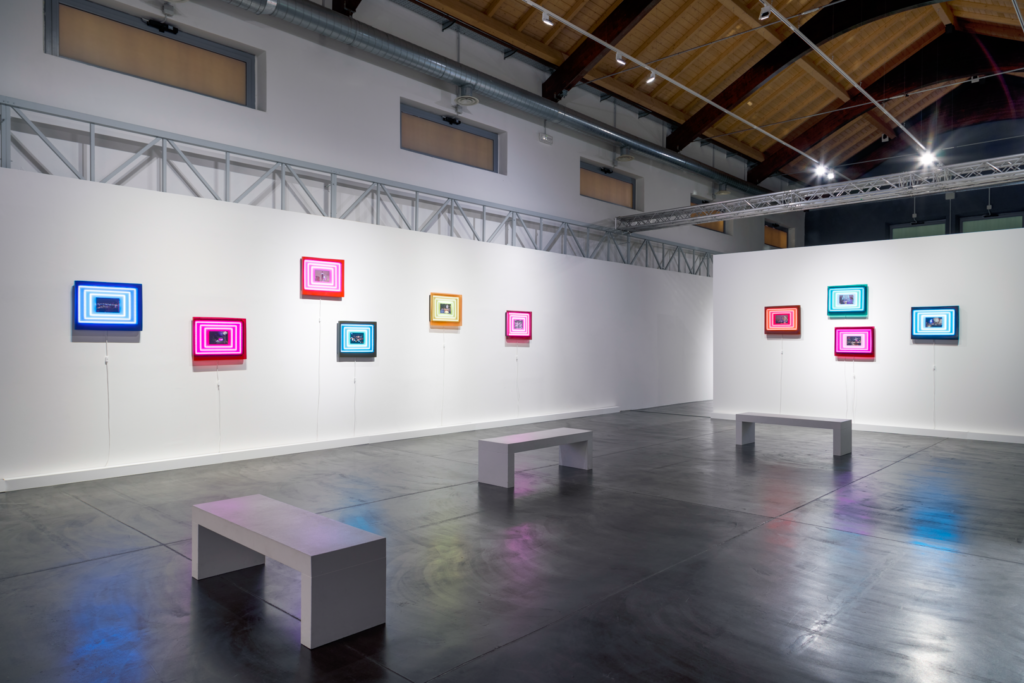
The unpublished series Merry Liseberg Parade(2021)fully expresses the multidisciplinarynature of Chiara Dynys’ works. Dynys’ participation in exhibitions in many international museum and cultural institution dedicated to twentieth-and twenty-first-century art, has positioned her work as a reference for studies focused on the relationship between space and light, installation, and conceptual visual languages
Chiara Dynys’ languagelanguage that feeds on contrasts, visions, reflections,and deceptions, that finds expression through different formsand through diverse media, in a continuous dialogue between light and space. The works propose a threshold, a limit, a vision on another space and a timethrough a cinematic narrative that deceive the viewer.This vision stems from the artist’s visceral need to narrate other dimensions, where perception and reality meet-or clash -generating lyrical visions of anotherimaginary.
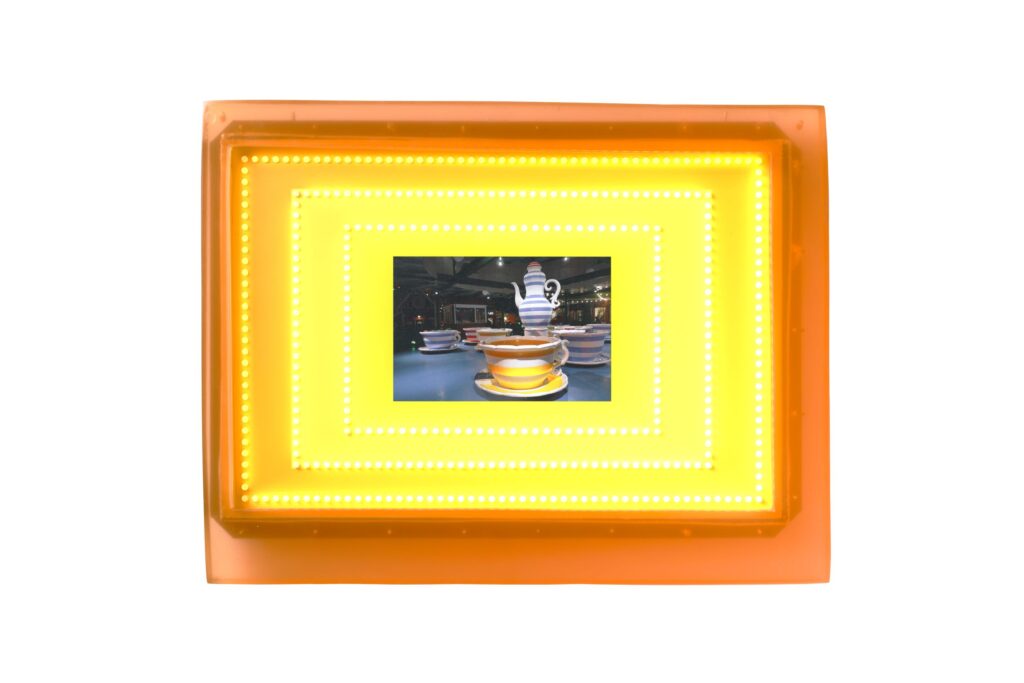
Particularly influenced by Cinema thanks to her mother who was a cinema critic, the artist found inspiration from her filmatic imaginary, referring to severalmajor directors in the history of cinema, from Roberto Rossellini to Jane Campion and Lars von Trier, from Federico Fellini to Stanley Kubrick. Their images reverberate through Dynys’s chosen forms of expression: light and space transfigure narratives andmoving images as they reoccur in the artist’s work from the 1980s until today.
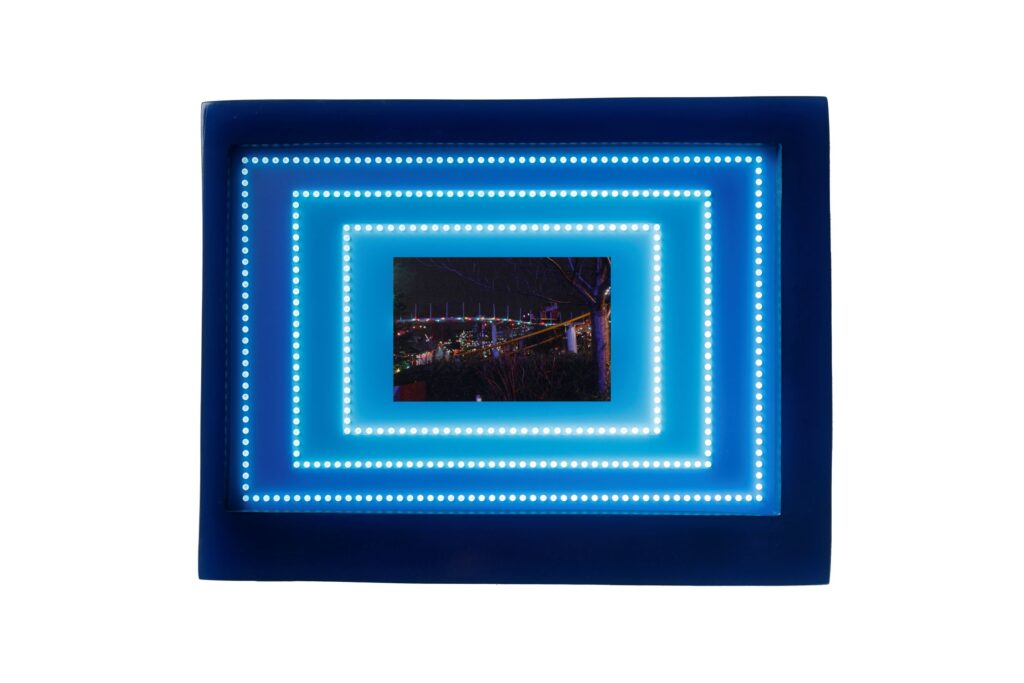
Merry Liseberg Parade perfectly embodies the echo of Dynys’ cinema imaginary in her practice, recalling those anomalous and disorienting factors thatbecomes an access to “Melancholia”. Living on contrasts, thisemotional state is traceable to all his poeticsand it’s aspecial quote to the iconic film by Lars von Triar, so dear to the artist.
“The propensity for melancholy returns in many of my works and metaphorically takes place in the conjugation of opposites. It always arises from a dimension of contradiction between terms, materials,and light. A duality split between joy and loneliness, as is evident in Merry Liseberg Parade.”.
Chiara Dynys
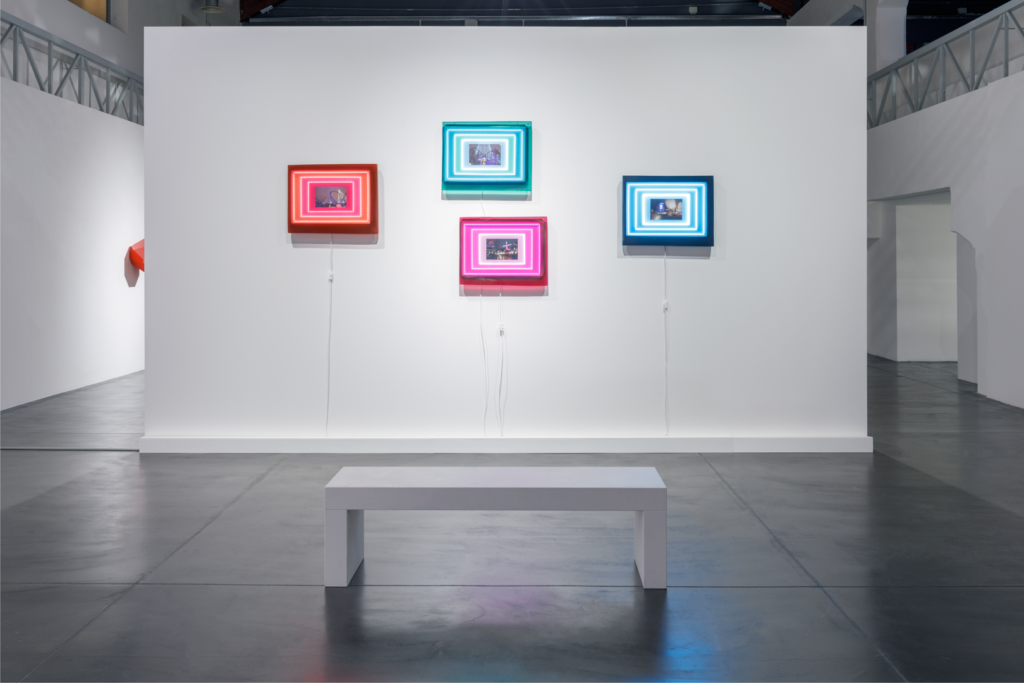
The artworkspresents images taken by the artist at Liseberg Amusement ParkinGothenburg, in thenorthern part of Sweden,during the Christmas period. The shots reveal icy and desolate scenery, characterized by a sort of forced cheerfulness.
“The contradiction between catastrophe and waiting. This for me is the metaphysical beauty of Melancholia. And in the northern climate of Merry Liseberg this contradiction between beauty and tragedy is evident. In the vacuous paradox of finding oneself in this sort of non-place, a meetingpoint for refugee communities in Sweden, where the consumerist delirium seems like a promised land, but one that is glacial and empty”
Chiara Dynys
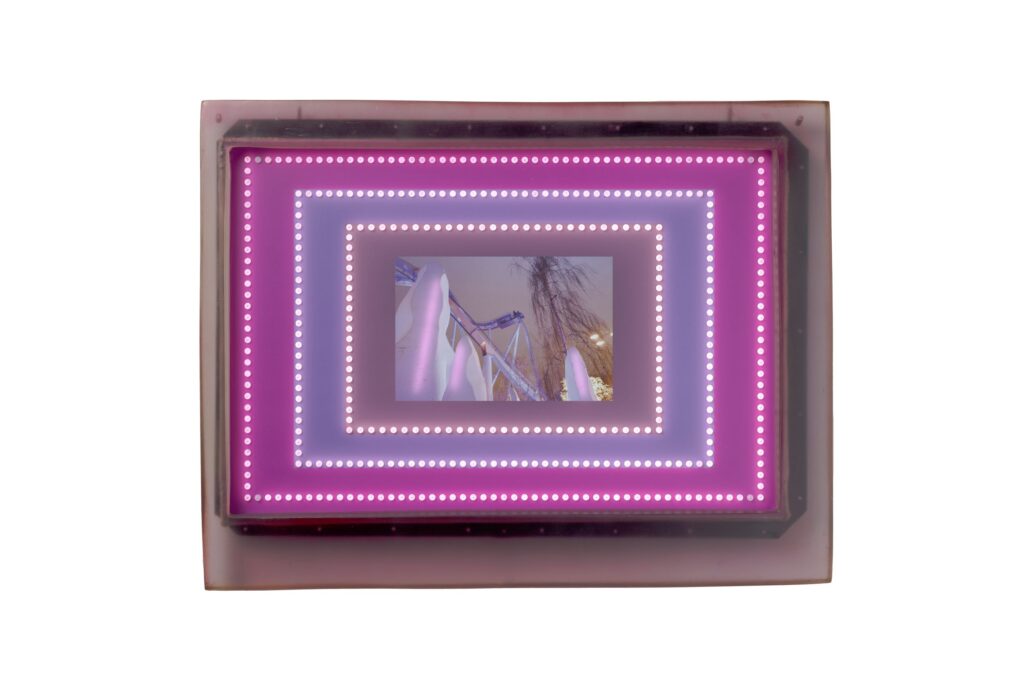
These visual devices are the outcome of a careful and meticulous process of definition that adds up to the use of very different materials related by Dynys according to a peculiar alchemy. The sculpture-frame are irregular and colored structures made of methacrylate with small LED lights that change color that immediately recall the fictional world of entertainment.
The visual intensity of the commercial nature of the subjects represented, emphasizes the paradoxical nature of these places, where the stereotypes of consumption are superimposed on a strange sense of melancholy and desolation.
Ultimatly, with Chiara Dynys the questioning of perceived reality, imagined, evoked, and even assimilated to fiction itself, appropriates a singular expressive code that predisposes the works to be true visual metaphors capable of addressing in another way the truth of our sensitive existence.
